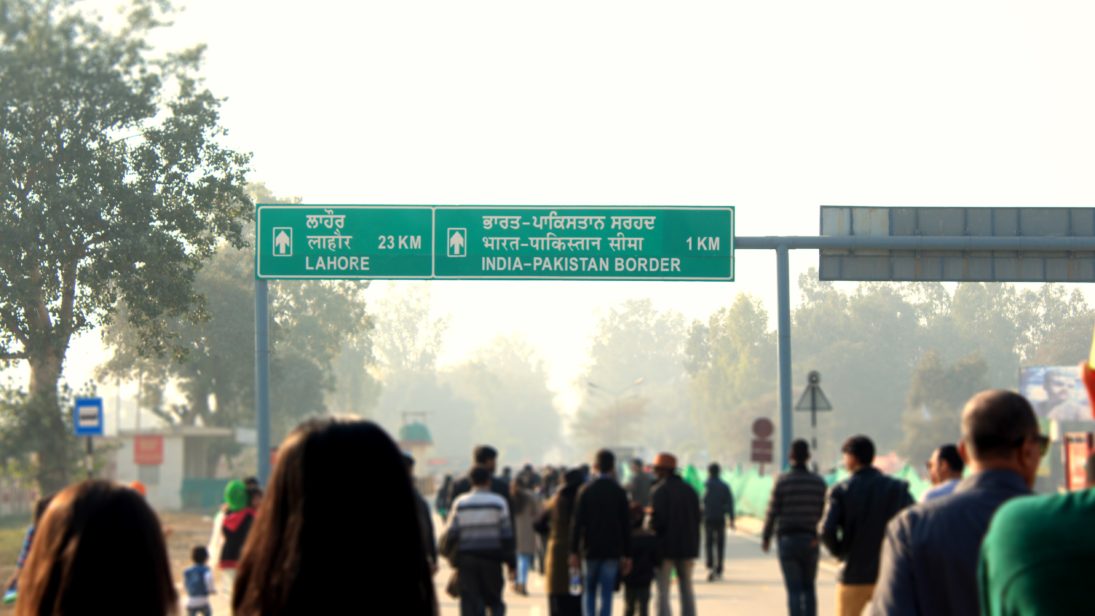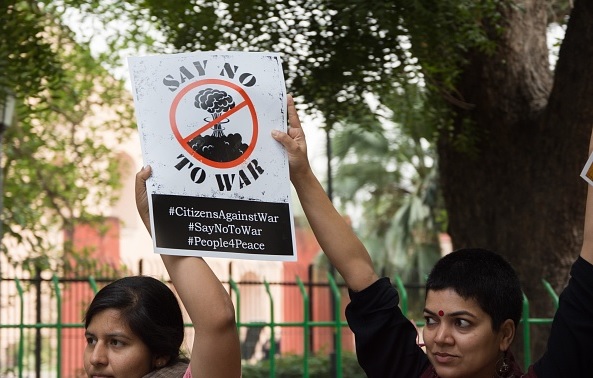
As India and Pakistan pursue new roles in the international arena, neither state wishes to be held back by a vicious cycle of dyadic crises. Whereas India aspires to assume a major power role — challenging China’s influence in the South Asian region, the Pacific Ocean, and even space — Pakistan seeks to eradicate accusations that the country provides safe haven to terrorists. This is likely why, during the most recent Indo-Pak conflict escalation, leadership on both sides reverted to a more creative approach formally known as conflict transformation (CT) in peace and conflict studies.
As explained by author Paul Laderach, CT aims to understand and mitigate the cultural and structural patterns that contribute to conflict by creating new relationships and institutions. Tensions dramatically increased at the Line of Control (LoC) in the aftermath of the Pulwama episode, but the return of an Indian pilot, captured during the aerial dogfight between the two adversaries, marked a surprising departure from previous crisis behavior by India and Pakistan. That Pakistan released the Indian pilot during the latest crisis and both sides subsequently de-escalated signals the potential for India and Pakistan to adopt a constructive approach to resolving their differences going forward.
Identifying Conflict Resolution Pitfalls in India-PakistanRelations
The “interdependence gap” – i.e. the lack of coordination between levels of leadership within society regarding conflict resolution, offers a plausible explanation for why peace processes between India and Pakistan fail. When leadership in government is unable to be on the same page as the media during conflict resolution, public opinion reflects the negativity it sees in the media.
If elite leaders (civilians and military officials in power) and middle-level leaders (the media) are not operating on the same wavelength, one dreadful incident like the Pulwama attack is enough to sabotage years of effort. Since the media is left out of a resolution process, it exacerbates popular sentiment by engineering propaganda. This is perfectly exemplified by the Mumbai attacks: live coverage by the Indian media happened to intensify the bitter sentiments. While the government delayed announcing its counter-response, media began to propagate the idea of militarily responding to Pakistan, even though government response inclined toward a diplomatic solution. Likewise, the Kashmir proposals (2004), which recognized and demilitarized regions on both sides of LoC, were advanced by then-President General Pervez Musharraf, but greatly criticized by the Pakistani media.
In this context, post-Pulwama presented a contrary scenario: the populations and media on both sides not only embraced the release of the Indian pilot as a gesture of peace, but even amidst heightened tensions, #saynotowar tweets were mutually advanced on social media by both sides. The decision was applauded not only by Pakistani media, but also seasoned Indian journalists. This kind of public anti-war outcry from the media, according to CT theory, can help realize political projects if it is incorporated in the peacemaking process.

Another perceptible lacuna in the resolution process is an “authenticity gap” – i.e. the absence of a peace process that is both determined and willed by those who live in conflict. CT calls for peace to be organic and not imposed by external actors. However, the consequences of third-party mediation are apparent in conflict resolution between India and Pakistan. For instance, despite conflict resolution efforts by countries like the United States and even the Security Council of the UN, India continues to avoid any action on the plebiscite that was to determine the future of Kashmir and Pakistan still uses militant proxies. Agreements arbitrated by external powers, such as the Tashkent Declaration mediated by Soviet Union in 1965, or deescalation attempted by the United States after incidents like the Kargil War and the Twin Peaks military standoff, have never resulted in a permanent resolution. As emphasized by CT theory, all efforts will be in vain until both actors equally generate the peace process.
Fostering New Narratives
There is a need to transform the India-Pakistan dynamic from a conflictual relationship into a constructive one. To this end, it is pertinent to try measures like CT, which changes the patterns of a relationship to imbue a sense of trust among adversaries. An important takeaway is that the media can play a constructive role in peacebuilding. Understanding the power of the media to reach all levels of society is crucial—the media can effectively help bring a shift from an adversarial mindset to a more amicable one. This is evident from the joint peace campaign, “Aman ki Asha”, led by the Jang group in Pakistan and The Times of India group, that has reportedly decreased threat perceptions among people in both counties.
Moreover, the Kartarpur corridor program is the epitome of CT at work. In November 2018, India and Pakistan finally agreed to establish the Kartarpur corridor bridging the Sikh shrines of Gurdwara Dera Baba Nanak (Gurdaspur district of Punjab, India) to Gurdwara Darbar Sahib Kartarpur (Narowal district of Punjab, Pakistan). For Sikh pilgrims in India, this corridor was a manifestation of a long-held desire to visit one of their holiest sites, located in Kartarpur. By allowing visa-free travel of Sikh pilgrims, Pakistan and India have an arena of cooperation that not only increases trust at the governmental level, but also creates goodwill among the publics. Pakistan’s Foreign Minister Shah Mehmood Qureshi sums this up by saying, “The more people meet, the more they realize how much in common we have, and what we are missing by not resolving our outstanding issues.”
An important takeaway is that the media can play a constructive role in peacebuilding. Understanding the power of the media to reach all levels of society is crucial—the media can effectively help bring a shift from an adversarial mindset to a more amicable one.
Pakistan and India need to rewrite the narrative of their relationship using creativity and empathy – key aspects of CT. For instance, both states face issues of food, energy, and water insecurity. If they were to shift focus, relations might be normalized through shared solutions for common problems. The United Nations Educational, Scientific and Cultural Organization (UNESCO) ranks Pakistan 114th and India 133rd out of 180 countries on water availability per person per year. Responding to this, the Sustainable Development Policy Institute (SDPI), one of the leading organizations in Pakistan pursuing water focused Track II dialogues between India and Pakistan, invites decisionmakers from both countries to revisit the Indo-Pak water-sharing agreement, the Indus Water Treaty. Through this treaty, Pakistan and India have effectively managed water resources of the Indus Basin. However, there remains room for improvement, and refining the treaty might work to address the increasing needs of both countries.
A CT-based approach to resolving the India-Pakistan conflict would also encourage communication between the youth of the two countries. There are already initiatives such as the Exchange for Change program led by Routes 2 Roots, a nonprofit based in New Delhi, and its partner organization Citizen Archive Pakistan, that give students the opportunity to communicate with and visit children in the other country, exposing them to the other’s ideas, history, and culture. This program helps the youth of both countries step out of rigid politicized narratives and influence an emerging generation of thinkers and analysts.
Conclusion
Given India and Pakistan’s shared history of partition and three subsequent wars, fear and anger is inevitable. However, it would serve India and Pakistan’s best interests if this cycle of violence ceased. Leadership on both sides clearly directed the conflict down a constructive path, evident from the exchange of tweets between Prime Minister Modi and Prime Minister Imran Khan on Pakistan National Day. Likewise, the release of 360 Indian fishermen last month as a goodwill gesture signals a positive change. If trust grows, the door will open to dialogue on enduring issues like Kashmir. The CT approach is the first step on a long road that may lead to peace and progress.
***
Image 1: Darshak Pandya via Pexels
Image 2: Javed Sultan via Getty Images


